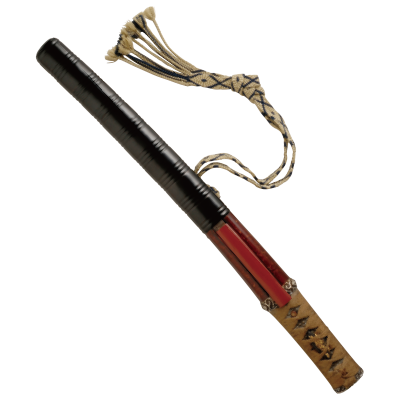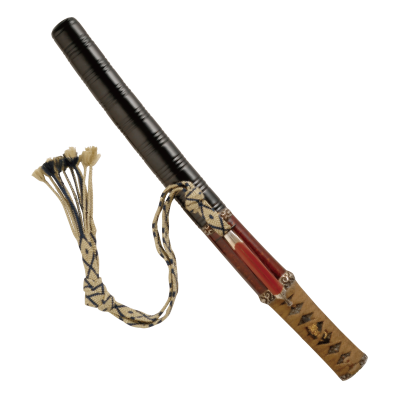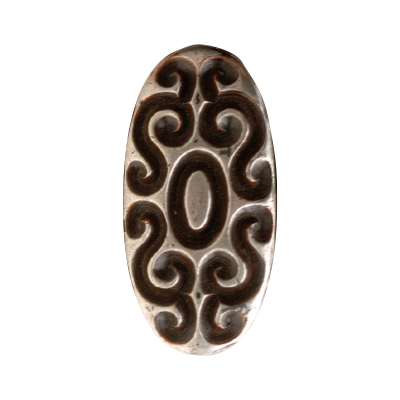Koshirae. Fuchi-kashira and kurikata with design of guri scrolls.
Mid-to-late Edo period Fuchi-kashira, kurikata: Silver, Shakudo, Copper
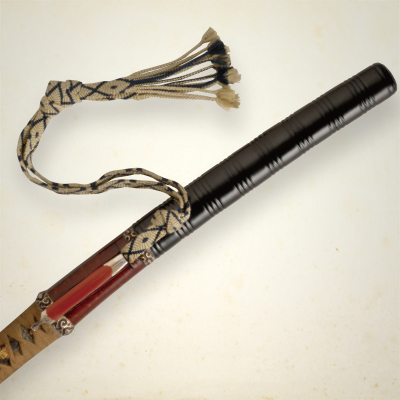
【 Dimensions(mm)】- Fuchi-kashira,kurikata:L 450
- 【 Date of production 】
- Mid-to-late Edo period
- A rare guribori aikuchi koshirae (sword mounting) with silver affixed to the surface of the shakudo and copper layering. The beauty of form manifest through the combined exoticism that was popular during the Edo period and this traditional Japanese technique, makes this piece wonderfully charming.
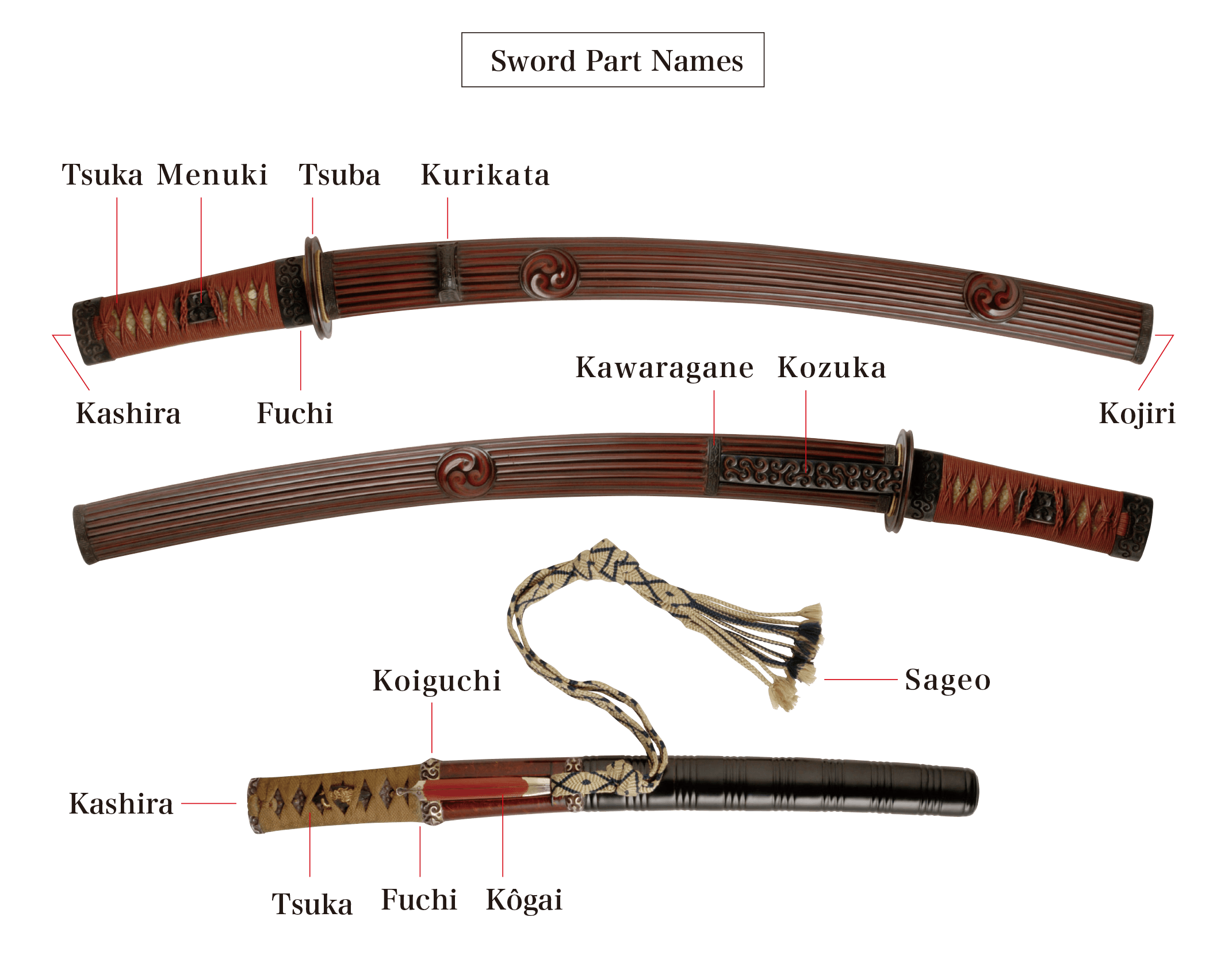
- Tsuka:Sword handle
- Fuchi:Metal collar on sword handle
- Kashira:Metal pommel (or butt cap) at tip of handle
- Menuki:Ornamental rivets on the tsuka. They also prevent the hand from slipping.
- Tsuba:Sword guard fitted between the handle and the blade, to protect the hand holding the handle
- Kurikata:Fitting near the sayaguchi (opening of scabbard) for attaching the sageo
- Kojiri:Ornamental fitting at the tip of the saya (scabbard)
- Kôgai:A utensil shaped like a chopstick that fitted into the scabbard and was used to tie back hair
- Kozuka:The handle of a small knife that fitted into the scabbard, or the small sword itself
- Kawaragane:Fittings attached to the part where the kozuka was stored
- Koiguchi:The opening, or mouth, of the scabbard
- Sageo:The cord used to attach the sword to the obi
